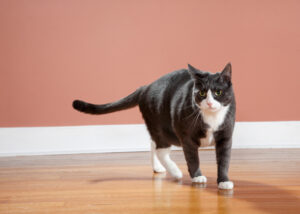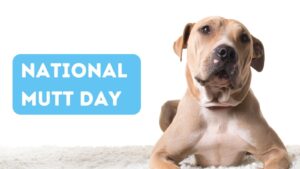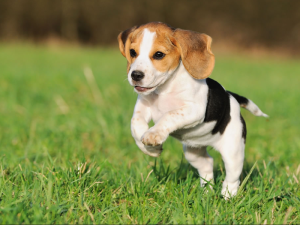Posts Tagged ‘veterinarians Glen Carbon’
Nutritional Tips for Pets
 Providing proper nutrition for pets is crucial for the health and well-being of your pets. Here are some general nutritional tips to ensure your pets receive the necessary nutrients.
Providing proper nutrition for pets is crucial for the health and well-being of your pets. Here are some general nutritional tips to ensure your pets receive the necessary nutrients.
- Consult with a Veterinarian: Before making any significant changes to your pet’s diet, consult with a veterinarian. They can provide personalized advice based on your pet’s breed, age, health status and specific needs.
- Balanced Diet: Ensure your pet’s diet is well-balanced and meets their nutritional requirements. This typically includes a mix of proteins, carbohydrates, fats, vitamins, and minerals.
- Quality Commercial Pet Food: Choose High-quality commercial pet food that is appropriate for your pet’s life stage (e.g., puppy, adult, senior). Looke for brands that list a specific meat source as the first ingredient and meet the standards set by relevant authorities.
- Portion Control: Over feeding can lead to obesity and other health issues. Follow the recommended portion sizes on the pet food packaging and adjust based on your pet’s age, activity level, and overall health.
- Fresh Water Ensure your pet has access to fresh, clean water at all times. Hydration is essential for overall health.
- Avoid Human Foods: Many human foods can be harmful to pets. Avoid feeding them chocolate, caffeine, alcohol, onions, garlic, grapes, raisins, and certain artificial sweeteners like Xylitol.
- Monitor Treats: While treats can be a part of your pet’s diet; be mindful of the quality. Treats should not make up more than 10% of your pet’s daily calorie intake.
- Regular Exercise: Combine a balanced diet with regular exercise to maintain a healthy weight and promote overall well-being.
- Special Dietary Needs: Some pets may have specific dietary needs due to allergies, sensitivities, or medical conditions. If your pet requires a special diet, work closely with your veterinarian to find a suitable option.
- Regular Checkups: Schedule regular veterinary check-ups to monitor your pet’s overall health, weight, and nutritional needs. Adjust their diet as necessary based on any changes in health or lifestyle.
- Transition Gradually: If you are changing your pet’s diet, do so gradually over a week to allow their digestive system to adjust. Mix the new food with the old food in increasing proportions.
Remember that individual pets may have unique nutritional requirements, so it is essential to tailor their diet to their specific needs with guidance from a veterinarian. Here at Olsen Veterinary Clinic, we are committed to the health of your pet. Please contact us at any time with questions.
10 Pet Health Myths Debunked
 There are several pet health myths that circulate widely. It’s important to separate fact from fiction for the well-being of our furry friends. Here are some common pet health myths debunked.
There are several pet health myths that circulate widely. It’s important to separate fact from fiction for the well-being of our furry friends. Here are some common pet health myths debunked.
1. Myth: A Warm, Dry Nose Indicates Illness
Debunked: A warm, dry nose does not necessarily mean a pet that is sick. Dogs and cats can have varying nose temperatures throughout the day. Factors like weather, hydration, and activity levels play a role.
2. Myth: Cats Always Land on Their Feet
Debunked: While cats have a remarkable ability to right themselves during a fall, it is not foolproof. Cats can still suffer injuries if they fall from a significant height.
3. Myth: Milk Is Good for All Cats
Debunked: Many adult cats are lactose intolerant and feeding them milk can lead to digestive upset and diarrhea. It is best to provide fresh water as their primary source of hydration.
4. Myth: Garlic and Onions are Safe for Dogs and Cats
Debunked: Garlic and onions contain compounds that can be toxic to pets and cause damage to their red blood cells. It’s advisable to keep these foods away from pets.
5. Myth: All Humans Medications Can be Given to Pets
Debunked: Many human medications are toxic to pets. Never give your pet any medication without consulting a veterinarian, as the wrong dosage or type can be harmful and even fatal.
6. Myth: Dogs Will Only Eat Grass if They’re Sick
Debunked: Some dogs eat grass simply because they like the taste or texture. While it’s not entirely clear why dogs eat grass, it’s not always a sign of illness.
7. Myth: Annual Vaccinations Are Always Necessary
Debunked: Some Vaccination needs may vary based on the pet’s health, lifestyle, and age. Some vaccines provide long-lasting immunity, and over-vaccination can have risks. Consult with your vet to create an appropriate vaccination schedule
8. Myth: Pet’s Age Seven Years for Every Human Year
Debunked: The rate at which pets age can vary by species and size. For example, small dog breeds tend to live longer than larger breeds. The one-size fits all calculation is not accurate.
9. Myth: Dry Cat Food Helps Clean Teeth
Debunked: While some dental diets may promote oral health. Relying solely on dry kibble is not a substitute for regular dental care. Brushing your cat’s teeth and providing dental treats can be more effective.
10. Myth: Scratching Furniture Means Cats are Being Destructive
Debunked: Scratching is a natural behavior for cats. Providing appropriate scratching posts and regularly trimming their nails can help redirect this behavior without resorting to punishment
Always give us a call for accurate information and advice tailored to your pet’s specific needs.
5 Ways to Keep Your Dog Safe in the Snow
 Keeping a dog safe in the snow is important, as cold weather can pose various risks to their health and well-being. Here are five ways to ensure your dog stays safe in snowy conditions.
Keeping a dog safe in the snow is important, as cold weather can pose various risks to their health and well-being. Here are five ways to ensure your dog stays safe in snowy conditions.
-
- Ensure Adequate Shelter: Ensure that your dog has access to a warm and dry shelter, such as a well-insulated doghouse or a heated indoor space. Limit the time your dog spends outdoors in extreme cold weather, especially during snowstorms.
- Use Protective Gear: Invest in appropriate winter gear for your dog, such as a waterproof and insulated coat. Booties can protect their paws from ice, snow, and harmful chemicals like de-icing salts. Make sure the gear fits properly and doesn’t cause any discomfort.
- Monitor Paw Health: Snow and ice can accumulate between the paw pads, leading to discomfort or injuries. Regularly check your dog’s paws for ice balls, cuts, or signs of frostbite. Wipe their paws with a damp cloth to remove any salt or chemicals.
- Keep Them Hydrated: Cold weather can be dehydrating and dogs may be less inclined to drink water when it is cold. Ensure that your dog has access to fresh water at all times. Dehydration can contribute to health issues, including susceptibility to hypothermia.
- Adjust Diet and Monitor Weight: Dogs my burn more calories in cold weather to stay warm. Adjust their diet accordingly and monitor their weight. A well-nourished dog is better equipped to handle the challenges of cold weather.
Remember that individual dogs have different tolerance levels for cold weather, and factors such as breed, age, and health should be taken into consideration. Always obeserve you dog for signs of discomfort or stress, and consult with your veterinarian if you have specific concerns about your dog’s well-being in snowy conditions.
If at any time you have concerns or questions, do not hesitate to contact our office. Have a safe and fun winter with your pup!
Is My Cat Sleeping Too Much? How to Know the Difference Between a Cat Nap and a Problem
 Cats are known for sleeping a lot, and it’s perfectly normal for them to spend a significant portion of their day napping. On average, cats can sleep anywhere from 12 to 16 hours a day and some cats may sleep even more, especially if they are very young or very old. However, if you’re concerned that your cat is sleeping too much and it might be a sign of a problem, here are some things to consider:
Cats are known for sleeping a lot, and it’s perfectly normal for them to spend a significant portion of their day napping. On average, cats can sleep anywhere from 12 to 16 hours a day and some cats may sleep even more, especially if they are very young or very old. However, if you’re concerned that your cat is sleeping too much and it might be a sign of a problem, here are some things to consider:
- Changes in Behavior: Pay attention to any noticelable changes in your cat’s behavior. If your cat is typically active, playful, and social when awake but suddenly becomes lethargic or withdrawn, it could be a sign of an underlying issue.
- Appetite and Thirst: Monitor your cat’s eating and drinking habits. A significant decrease in appetite or a noticeable increase in thirst can be indicators of a health problem.
- Weight Changes: Sudden weight loss or gain can be a sign of various health issues, so keep an eye on your cat’s weight.
- Bathroom Habits: Changes in litter box habits, such as straining to urinate, diarrhea, or constipation, may indicate a problem. Also, observe the color and consistency of your cat’s urine and feces.
- Physical Symptoms: Look for physical signs of distress, such as vomiting, coughing, sneezing, limping, or any obvious discomfort or pain. These can be clues that something is amiss.
- Age and Health History: The age and overall health of your cat can also influence their sleeping patterns. Senior cats may sleep more than younger cats. Consult with your veterinarian to discuss age-related changes in your cat’s behavior.
- Environmental Factors: Ensure your cat’s environment is comfortable and stress-free. Changes in your cat’s living situation, such as moving to a new home, introducing a new pet, or household routine, can affect their behavior and sleep patterns.
- Regular Veterinary Check-Ups: Regular veterinary check-ups are essential for maintaining your cat’s health. If you’re concerned about your cat’s excessive sleeping or any other changes, consult your veterinarian. They can perform a physical examination, run diagnostic tests, and provide guidance of your cat’s specific needs.
Obviously, you know your cat better than anyone. So if you have any concerns or questions about your fur baby, don’t hesitate to contact our office today to set up a visit.
Should Your Dog Get a Choker Collar? Here’s What You Need to Know
 Whether or not your dog should wear a chain choker collar is a matter of debate among dog trainers, veterinarians, and animal welfare organizations. There are several factors to consider before deciding to use a chain choker collar:
Whether or not your dog should wear a chain choker collar is a matter of debate among dog trainers, veterinarians, and animal welfare organizations. There are several factors to consider before deciding to use a chain choker collar:
1 Training Methodology: Chain choker collars are often used in training as a correction tool. However, they are associated with aversive training methods that rely on punishing undesirable behaviors through discomfort or pain. Many modern dog trainers advocate for positive reinforcement-based training methods, which focus on rewarding desired behaviors rather than punishing unwanted ones.
2 Breed and Size of the Dog: Smaller or more delicate dog breeds may be more vulnerable to injury when using chain choker collars. Breeds with thin necks, like Greyhounds, may be at a higher risk.
3 Health and Behavior Issues: Some dogs may have underlying health issues or behavioral problems that make the use of chain choker collars risky or inappropriate. For example, dogs with respiratory problems, brachycephalic breeds (i.e., Bulldogs), or fearful and aggressive should not be subjected to such collars.
4 Training Experience: If you are not experienced in using chain choker collars correctly, there is a risk of causing harm to your dog or reinforcing negative behaviors unintentionally. It is crucial to learn how to use these collars properly if you choose to use them.
5 Alternatives: There are many alternative training tools and methods available that can effectively train dogs without resorting to aversive methods. Positive reinforcement, clicker training, and head halters are examples of more humane and effective training tools.
6 Consultation with a Professional: If you are considering using a chain choker collar, it is strongly recommended that you consult with a professional dog trainer or behavioralist who can assess your dog’s specific needs and help you make an informed decision.
7 Local Laws and Regulations: Some places have laws and regulations that restrict or even ban the use of certain dog collars, including chain choker collars. Be sure to check your local laws and follow them accordingly.
If you have any questions about this or anything else, don’t hesitate to contact our office.
What Is Your Cat Trying to Say? How to Decipher Your Cat’s Body Language
 Have you ever talked to animals? Have you ever wanted to converse with your pets’ and interpret their body language ala Dr. Dolittle? Our pets tend to be very important parts of our lives so interpreting their body language can be important to us.
Have you ever talked to animals? Have you ever wanted to converse with your pets’ and interpret their body language ala Dr. Dolittle? Our pets tend to be very important parts of our lives so interpreting their body language can be important to us.
Tail Position: A cat’s tail position can convey various emotions. A relaxed, straight tail usually means your cat is content. A slightly curved tail might indicate curiosity. A puffed-up tail can indicate fear or agitation, while a flicking tail could mean excitement or annoyance.
Ears: Pay attention to your cat’s ears. Forward-facing ears generally indicate curiosity or interest, whe flattened ears suggest fear, anger, or irritation.
Purring: Purring is often a sign of contentment and happiness, though cats can also purr when they’re anxious or in pain.
Body Posture: A relaxed and stretched-out posture signifies comfort and relaxation. An arched back could indicate fear or aggression, while a crouched stance may mean your cat is ready to play or is feeling defensive.
Eye contact: Direct eye contact can be seen as a challenge or a sign of aggression in the cat world. Slow blinking from your cat is ofter a sign of affection and trust.
Kneading: Cats may knead with their paws, pressing them against you or soft surfaces. This behavior is oftern associated with contentment and comfort, as it is reminiscent of their kittenhood when they kneaded their mother’s belly to stimulate milk flow.
Grooming: Grooming is a common self-soothing behavior in cats. If your cat is grooming itself after a stressful event, it could be a sign that it’s trying to calm down.
Remember that individual cats may have different personalities and quirks, so it is essential to observe your cat’s behavior over time to better understand its unique body language. Additionally, context plays a significant role in interpreting cat body language. Consider the situation and overall environment to make a more accurate interpretation of your cat’s emotions and intentions.
If you have any questions about your pet’s quirks or body language please call us at 618-656-5868 or contact us here. We are here to help.
National Mutt Day: Here Are Some Ways To Celebrate
 Question of the month. What do Higgins ( the dog from the film Benji) , Laika ( the Soviet space dog), Pluto (Mickey Mouses’s pet dog) and Clifford the Big Red Dog all have in common? Believe it or not, they are all famous mixed-breed dogs and on July 31, it is National Mutt Day.
Question of the month. What do Higgins ( the dog from the film Benji) , Laika ( the Soviet space dog), Pluto (Mickey Mouses’s pet dog) and Clifford the Big Red Dog all have in common? Believe it or not, they are all famous mixed-breed dogs and on July 31, it is National Mutt Day.
National Mutt Day, also known as National Mixed Breed Dog Day, is a day dedicated to celebrating mixed breed dogs and raising awareness about their value as pets. It is observed on two different dates throughout the year: July 31st and December 2nd.
On National Mutt Day, people are encouraged to adoopt mixed breed dogs from animal shelters and rescue organizations rather than buying from breeders. The day aims to promote the adoption and well-being of mixed breed dogs and to combat the stigma and misconceptions surrounding them.
Mixed breed dogs, often referred to as mutts, are dogs that have a combination of different breeds in their ancestry. They can exhibit a wide range of characteristics, both in terms of appearance and temperament. Adopting a mutt can be a rewarding experience, as they often have unique and diverse traits.
If you are interested in celebrating National Mutt Day, you can consider doing the following:
- Visit your local animal shelter or rescue organization: Spend some time with the mixed breed dogs available for adoption, and consider bringing one into your family if it is the right fit for you.
- Volunteer at an animal shelter: Offer your time and help by volunteering at a local shelter. You can assist with walking the dogs, cleaning their encolosures, or providing general care.
- Spread awareness: Use your social media platforms to share information about National Mutt Day and the benefits of adopting mixed breed dogs. Encourage others to consider adopting a mutt or donate to local animal welfare organinzations.
- Organize an event: Consider organizing an event in your community that promotes adoption and celebrates mixed breed dogs. This could include activities such as doggie playdates, training sessions, or informational sessions about responsible pet ownership.
Here at Olsen Veterinary Clinic, we take pride in taking care of EVERY animal, no matter the breed or type. If you have any questions about your pet, don’t hesitate to contact our office today!
Tips to Keep Your Pets Safe this Independence Day
 A lot of people will be celebrating Independence Day on July 4th. It is important to think about our pets also and plan ahead. As much as we like a fun time celebrating, a lot of pets are scared to death with the fireworks and crowds. It is important to talk to your veterinarian about possibly getting some sedatives to relieve the anxieties associated with them and get advise from them to find out what might be best. It is best to leave your pets inside with the shades pulled down and maybe the tv or radio playing to try and muffle the explosions of the fireworks. Several communities have firework shows that are fantastic to watch, however LEAVE YOUR PET AT HOME. The loud reports can scare the pets and make them a nervous wreck.
A lot of people will be celebrating Independence Day on July 4th. It is important to think about our pets also and plan ahead. As much as we like a fun time celebrating, a lot of pets are scared to death with the fireworks and crowds. It is important to talk to your veterinarian about possibly getting some sedatives to relieve the anxieties associated with them and get advise from them to find out what might be best. It is best to leave your pets inside with the shades pulled down and maybe the tv or radio playing to try and muffle the explosions of the fireworks. Several communities have firework shows that are fantastic to watch, however LEAVE YOUR PET AT HOME. The loud reports can scare the pets and make them a nervous wreck.
Talking about celebrations, there is usually a lot of good food for people, but avoid allowing your pet to counter surf and eat the table food. Some foods such as grapes are toxic for pets, while other greasy and fatty foods may lead to a gastric illness like pancreitis. These illnesses might then require a trip to see your veterinarian and possibly be costly and deadly.
If you and your family are around water during the holiday, it is important to have a life jacket handy for your pet, as not all dogs are great swimmers. Whether it is on a lake or in the pool, the dogs may tire and then start to struggle and panic. A life jacket for your pet may be able to keep your pet safe.
We are happy to have a conversation about any concerns you have. Make sure to protect your furry companion this summer. Contact our offices today!
Cat Safety Tips: How to Protect Your Furry Companion
 Many of us have those 4-legged feline friends that love to hunt and no amount of domestication has changed their inherent desire to patrol their domain in the hunt for prey. We have all seen the look of pure joy on our cat’s faces when they watch birds and small rodents from the window. And because cats are naturally curious, they love to explore. That is why some people allow their cats to spend considerable time outdoors. The downside it that the outdoors has many dangers that can linger and it is our job as responsible owners to keep them safe.
Many of us have those 4-legged feline friends that love to hunt and no amount of domestication has changed their inherent desire to patrol their domain in the hunt for prey. We have all seen the look of pure joy on our cat’s faces when they watch birds and small rodents from the window. And because cats are naturally curious, they love to explore. That is why some people allow their cats to spend considerable time outdoors. The downside it that the outdoors has many dangers that can linger and it is our job as responsible owners to keep them safe.
While most experts would recommend that the best thing to do would be keeping them indoors, you can allow them to get some fresh air in a relative safe environment away from predators that would prey on your cat and making sure that they are protected when they go outside.
Some owners may try to leash train their cat. This is one of the easiest means of monitoring where your cat goes because you get to go along for the walk. Cat’s generally dislike harnesses, so they will need to be made accustom to using them first. This may entail having the harness on inside and provide positive reinforcement with treats. Supervised outdoor time is a great way to bond with your cat and give her the mental stimulation that her wild instincts crave.
Whether you allow her to roam free or keep her as close as possible, it is important for the cat to either have a microchip or some other form of identification on your pet. If you use a collar, a safety collar with an elastic panel will allow your pet to break free if it gets caught.
To allow cats to have the ability to go outside, some owners make a catio that keep predators out and their pet in. This can serve as an outdoor playground within the vicinity of your home. You can feel safe knowing where it is and that she is not running out into the street or being picked up by predator birds or other mammls.
If your cat goes outdoors, it is at risk to the diseases and parasites that the outdoor feral cats have. So it is important to have your pet’s vaccines updated and kept on flea and tick control.
Your back yard can be dangerous to your pet if you have planted some toxic plants for landscaping. Plants like lillies may look nice in your back yard, but they can be toxic to your pet. It is important to make sure that anything potentially toxic and dangerous be picked up and secured. I would also recommend not having mouse poisons available because not only would the poison be toxic, eating a dead mouse that has succumbed to the poison may be also lethal to the cat.
It is important to have a regular dinner time. That way when the cat’s return for it evening meal, they will be able to be locked up for the evening. This will protect her from the nightly predators and allow her to go on daily patrol the next morning.
For any more questions on cats, or any other furry companion, contact our offices today!
New Puppy Checklist: Everything You Need Before Welcoming Your New Furry Friend into Your Life
 Bringing a new puppy into your home is an exciting time but requires some preparation for your home. Puppies require a lot of attention and care, so this checklist will be beneficial if you are unsure where to start with the basics for your new puppy.
Bringing a new puppy into your home is an exciting time but requires some preparation for your home. Puppies require a lot of attention and care, so this checklist will be beneficial if you are unsure where to start with the basics for your new puppy.
Some companies have created puppy starter kits. For example, this box made by Chewy has a set of toys, treats, and potty-training materials to help you with your new puppy. All top-rated items, new puppy owners are sure to appreciate it. It also makes a great gift. It can be found here.
Beyond toys, treats, and potty-training materials, puppies need food and water bowls. There are a lot of different options, but one that is slightly lifted is easier for your puppy to eat from. If you get one with walls, it is more likely your floor will stay cleaner.
Also necessary is a bed for your pet. An elevated bed is good for keeping your dog lifted and is helpful for teaching different cues. Other more traditional options are great too, especially as your pups are growing quickly.
Some owners choose to crate their puppies, and there are a lot of options but must be replaced as dogs grow. Crates help dogs have a safe place, especially as they adjust to a new space and lifestyle.
Also important for your new puppy is a leash. There are many kinds of leashes, with different uses. It will most likely be trial and error to find what works for you and your puppy, so be prepared for a trial period.
Puppies require hygiene efforts. This includes toothbrushes, toothpaste, nail clippers, brushes, and bathing supplies. Providing exposure to these items while young makes it less scary for adult dogs and easier for their owners.
Lastly, a collar is a great way to express your and your pet’s personality. Be prepared for your new pup with a collar and tag to provide some protection and peace of mind.
The last step for a new puppy is establishing an appointment with your veterinarian to get started on vaccinations and discuss your new dog’s life! Feel free to contact Dr. Olsen of Olsen Veterinary Clinic at 618-656-5868 to set up an appointment or discuss any questions!
